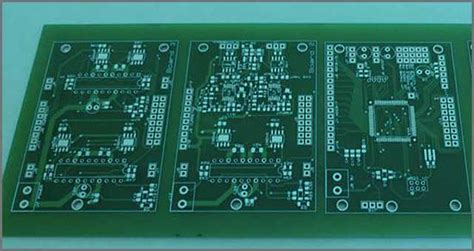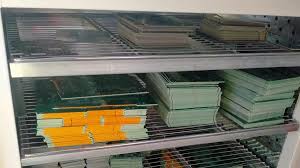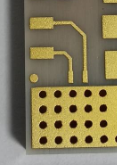Navigating PCB Board House Selection: Cost, Features, and Compatibility
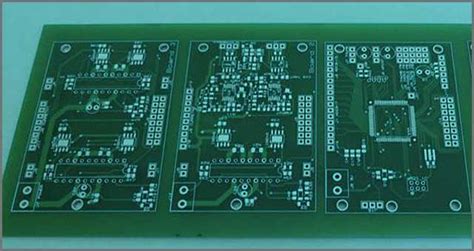
Key Takeaways
When selecting a PCB board house, prioritize understanding how PCB manufacturing cost aligns with your budget and project scope. Not all PCB manufacturing companies offer the same pricing structures—factors like layer count, material choice, and turnaround time significantly influence expenses. For example, a 4-layer prototype might cost $100-$200 per board, while high-volume orders could drop below $5 per unit.
Design complexity plays a critical role in vendor compatibility. Advanced features like high-density interconnects (HDIs) or blind/buried vias require specialized equipment and expertise. Ensure your chosen PCB manufacturing business can handle these specifications without compromising quality.
| File Compatibility | IPC-2581 | Gerber Standards |
|---|---|---|
| Data Richness | Full stackup, materials, and netlists | Limited to layers and drill data |
| Software Support | Growing adoption | Industry default |
| Error Risk | Lower due to unified format | Higher due to fragmented files |
Tip: Confirm file format requirements early to avoid delays. Some PCB manufacturing partners, like Andwin PCB, offer free file checks to ensure compatibility.
Balancing quick-turn services with quality is essential. While 24-hour turnaround might suit urgent prototypes, high-volume orders often demand rigorous testing (e.g., AOI or X-ray inspection). Scaling production requires a vendor with robust logistics—ask about their capacity to shift from 100 to 10,000 units seamlessly.
Domestic vs. overseas options present trade-offs. Local suppliers simplify communication and reduce shipping times, but offshore PCB manufacturing companies may offer cost savings of 20-40%. Weigh these against potential risks like language barriers or intellectual property concerns.
Lastly, evaluate certifications (ISO 9001, UL, RoHS) and technical support responsiveness. A vendor’s ability to troubleshoot design issues or adjust tolerances can make or break your project timeline.

Cost Considerations in PCB Board House Selection
When evaluating PCB manufacturing partners, understanding cost drivers is critical to aligning your project’s budget with technical requirements. PCB manufacturing cost varies significantly based on design complexity, material selection, and order volume. For instance, multilayer boards with high-density interconnects or specialized finishes like ENIG (Electroless Nickel Immersion Gold) often incur higher labor and material expenses compared to standard two-layer designs. Balancing performance needs with budget constraints requires a clear breakdown of how features like via types, solder mask colors, or impedance control impact pricing.
Material choices play a pivotal role—opting for standard FR-4 substrates keeps costs manageable, while high-frequency laminates or flexible materials escalate expenses. Additionally, PCB manufacturing companies often tier pricing based on order quantity. Prototype runs typically have higher per-unit costs due to setup fees, but scaling to high-volume orders unlocks economies of scale. Always clarify whether quotes include hidden charges like tooling, testing, or shipping, as these can inflate the final price unexpectedly.
Another key factor is the PCB manufacturing business model of your chosen partner. Domestic suppliers might offer faster turnaround and easier communication but at a premium, while overseas options could reduce costs by 20–40%—though lead times and logistics risks increase. To optimize spending, compare how different providers structure their pricing for similar specs and request sample quotes for identical designs.
Finally, prioritize transparency. Reputable PCB manufacturing partners provide detailed cost breakdowns and flag potential overages early. While minimizing expenses is important, undervaluing quality or reliability can lead to costly rework or delays. By analyzing both visible and hidden costs, you ensure your selection aligns with both technical and financial goals.
Design Complexity and Feature Sensitivities
When selecting a PCB manufacturing partner, understanding how design complexity influences production feasibility and cost is critical. High-density interconnects, multi-layer stacking, or advanced surface finishes like ENIG (Electroless Nickel Immersion Gold) require specialized expertise and equipment. Not all PCB manufacturing companies can efficiently handle designs with tight tolerances—such as trace widths below 3 mil or microvias—without compromising yield rates. You’ll need to assess whether a provider’s capabilities align with your design’s technical demands, as mismatches can lead to delays or inflated PCB manufacturing costs.
Feature sensitivities also play a pivotal role. For example, designs incorporating RF components or high-speed signal paths demand precise impedance control and material selection. If your project relies on flexible PCBs or hybrid rigid-flex boards, verify that the manufacturer’s processes support these materials. Some PCB manufacturing businesses may lack the infrastructure for advanced techniques like laser drilling or sequential lamination, which are essential for complex layouts. Transparent communication about your design’s critical features—such as thermal management requirements or solder mask specifications—helps avoid costly revisions later.
Balancing innovation with practicality is key. While pushing the limits of PCB manufacturing technology can enhance performance, over-engineering may strain budgets or extend lead times. Prioritize features that directly impact functionality and reliability, and work closely with your chosen partner to identify cost-effective compromises. For instance, opting for standard FR-4 substrates instead of high-frequency laminics might reduce expenses without sacrificing performance in non-critical applications.
Finally, consider how design complexity affects scalability. A prototype-friendly PCB manufacturing company might excel at quick-turn services but lack the capacity for high-volume production. Aligning your design’s feature requirements with a manufacturer’s strengths ensures smoother transitions from concept to mass production.
File Compatibility: IPC-2581 vs. Gerber Standards
When selecting a PCB manufacturing partner, ensuring file compatibility is critical to avoid delays and costly revisions. Two primary standards dominate the industry: IPC-2581 and Gerber (RS-274X). Understanding their differences helps you align with PCB manufacturing companies that best support your design workflow.
Gerber remains the most widely adopted format due to its simplicity and legacy use. It breaks design layers into individual files, making it accessible for smaller PCB manufacturing businesses or projects with straightforward requirements. However, its lack of embedded intelligence—such as layer stack-up details or material specifications—can lead to misinterpretations, especially for complex designs. This gap often requires supplemental documentation, increasing the risk of errors and raising PCB manufacturing cost if revisions are needed.
In contrast, IPC-2581 is a unified, intelligent format that bundles design data—including layer stack-ups, materials, and netlists—into a single file. This reduces ambiguity and streamlines communication between designers and manufacturers. While this standard enhances accuracy for high-density or multi-layer boards, its adoption is still limited among smaller PCB manufacturing companies. You may encounter compatibility issues if your chosen vendor relies on older software or lacks the infrastructure to process IPC-2581.
To navigate this, confirm your manufacturer’s supported formats early in the process. If using Gerber, double-check that all layers and annotations are explicitly defined. For advanced projects, prioritize PCB manufacturing partners who embrace IPC-2581 to leverage its data-rich structure. Balancing compatibility with your design’s complexity ensures smoother transitions from prototype to production, minimizing bottlenecks in your PCB manufacturing business timeline.
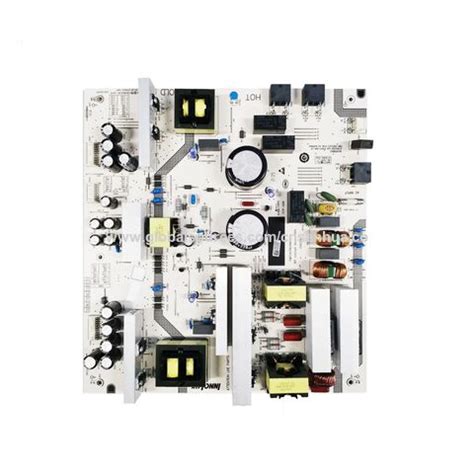
Balancing Quick-Turn Services with Quality Requirements
When selecting PCB manufacturing companies, balancing rapid turnaround times with consistent quality is a critical challenge. Quick-turn services are essential for meeting tight project deadlines, but they shouldn’t come at the expense of reliability or performance. Speed-focused providers may cut corners in material selection, testing protocols, or design validation, leading to hidden PCB manufacturing cost increases from rework or failures. To avoid this, prioritize vendors that offer transparent timelines paired with robust quality assurance processes, such as automated optical inspection (AOI) or impedance testing.
Evaluate how PCB manufacturing partners handle design complexity during accelerated production. Some shops expedite orders by simplifying fabrication steps, which can compromise fine-pitch traces, high-density interconnects, or advanced surface finishes. Clarify whether their quick-turn capabilities align with your design’s technical requirements—especially for high-frequency or mixed-signal boards. Additionally, verify file compatibility early: submitting IPC-2581 or Gerber files with incomplete layers or unclear annotations can delay even the fastest services.
Cost also plays a role in this balance. While faster turnaround often raises PCB manufacturing business pricing, some companies offer tiered services—allowing you to pay a premium only for critical stages like multilayer lamination or controlled impedance testing. For prototypes, this flexibility helps manage budgets without sacrificing validation needs. However, for high-volume production, ensure that speed optimizations (like panelization efficiency) don’t undermine long-term reliability.
Finally, assess communication workflows. A vendor’s ability to resolve design-for-manufacturability (DFM) issues within tight deadlines depends on their technical support responsiveness. Look for PCB manufacturing partners that provide real-time updates and dedicated engineers to troubleshoot conflicts between speed and quality. By aligning these factors, you can secure both rapid delivery and confidence in your board’s performance.
Scaling Production: Prototype to High-Volume Manufacturing
When transitioning from prototype to high-volume manufacturing, you’ll need to evaluate how PCB manufacturing companies handle scalability without compromising quality or inflating costs. Prototyping allows you to test designs and functionality, but scaling requires a shift in focus toward process optimization and supply chain efficiency. Look for suppliers that offer flexible production tiers, ensuring they can seamlessly ramp up output while maintaining consistency in PCB manufacturing cost structures.
A common challenge lies in balancing design refinements from the prototype phase with the demands of mass production. For example, a feature that works in small batches—like intricate trace widths or specialized materials—might become cost-prohibitive or technically unfeasible at scale. Partnering with PCB manufacturing experts who understand design-for-manufacturability (DFM) principles ensures your design is optimized for both low- and high-volume runs.
Cost considerations evolve significantly during scaling. While prototypes prioritize speed and flexibility, high-volume PCB manufacturing business models rely on economies of scale. Negotiate pricing tiers that reflect volume discounts, but verify there are no hidden fees for tooling, setup, or material sourcing. Additionally, confirm that the manufacturer’s equipment and workflows support automated assembly and rapid throughput to avoid bottlenecks.
File compatibility remains critical. Ensure your chosen partner supports industry-standard formats like Gerber or IPC-2581, especially when transferring designs between prototyping and full-scale production teams. Misaligned file standards can lead to delays or errors, undermining cost and timeline advantages.
Finally, assess certifications and quality control protocols. Scaling production introduces risks like variability in material quality or solder joint integrity. Suppliers with robust testing frameworks (e.g., AOI, X-ray inspection) and adherence to ISO 9001 or IPC-A-600 standards reduce these risks, ensuring your high-volume output meets the same reliability benchmarks as your prototypes.
Domestic vs. Overseas PCB Manufacturing Options
When choosing between domestic and overseas PCB manufacturing companies, you’ll face trade-offs in PCB manufacturing cost, lead times, and logistical complexity. Domestic providers often offer faster turnaround times—critical for prototyping or urgent revisions—and smoother communication due to shared time zones and language. However, this convenience typically comes at a premium, with higher labor and operational expenses influencing the final PCB manufacturing business pricing. On the other hand, overseas partners, particularly in regions like Southeast Asia or Eastern Europe, can significantly reduce per-unit costs for high-volume orders, leveraging economies of scale and lower labor rates.
Yet, offshore production introduces challenges. Longer shipping times, potential customs delays, and language barriers may complicate timelines, especially for complex designs requiring iterative feedback. File compatibility also becomes a focal point: while many overseas manufacturers now support IPC-2581 standards, some still rely on legacy Gerber files, which could lead to misinterpretation if design specifications aren’t meticulously documented. Additionally, verifying quality control processes and certifications (e.g., ISO 9001, UL) is essential when partnering with overseas PCB manufacturing firms, as inconsistent standards might risk compliance in regulated industries like medical or automotive.
Domestic suppliers, while costlier, often provide tighter quality oversight and easier access to technical support, reducing risks during scaling from prototype to mass production. For smaller batches or projects requiring rapid iteration, this proximity can justify the higher PCB manufacturing cost. Conversely, if your focus is on cost efficiency for large-scale runs, overseas options may align better with budget constraints—provided you factor in hidden expenses like import duties or rework due to miscommunication. Balancing these factors requires a clear understanding of your project’s priorities: speed, cost, complexity, and long-term scalability.
Technical Support and Communication Challenges
When evaluating PCB manufacturing companies, technical support and clear communication are critical factors that directly impact project timelines and outcomes. Even the most advanced PCB manufacturing processes can encounter unexpected issues, from design ambiguities to material compatibility conflicts. Proactive technical teams that offer design-for-manufacturability (DFM) feedback or troubleshooting guidance can save you costly revisions. However, not all providers prioritize this level of collaboration—especially if you’re balancing PCB manufacturing cost constraints with quality expectations.
Language barriers and time zone differences often complicate interactions with overseas PCB manufacturing business partners. For instance, clarifying design specifications or resolving file compatibility errors might involve delayed responses, risking production bottlenecks. To mitigate this, prioritize vendors with dedicated account managers or multilingual support teams who ensure seamless communication. Tools like real-time chat platforms or shared project dashboards can further streamline interactions, reducing misunderstandings in complex projects.
Another challenge lies in aligning technical jargon. Terms like “controlled impedance” or “stack-up tolerances” might carry nuanced interpretations between your team and the manufacturer. Clear documentation, such as annotated Gerber files or IPC-2581-compliant deliverables, helps bridge this gap. Always verify whether the manufacturer’s technical team is trained to interpret your preferred file formats and design standards.
Finally, assess how PCB manufacturing companies handle post-production support. Will they assist with failure analysis or root-cause investigations if boards fail testing? A partner invested in long-term collaboration will offer solutions rather than shifting blame. By prioritizing transparency and responsiveness, you minimize risks while fostering a relationship that scales with your production needs—whether prototyping or transitioning to high-volume orders.
Evaluating Certifications and Industry Compliance
When selecting a PCB manufacturing partner, verifying certifications and compliance with industry standards is non-negotiable. Certifications like ISO 9001 (quality management), AS9100 (aerospace), or IPC-A-600 (acceptability of printed boards) signal that a PCB manufacturing business adheres to rigorous quality and reliability protocols. These credentials ensure that your designs meet regulatory requirements, especially for industries like medical devices, automotive, or aerospace, where failure risks are critical.
Start by identifying which certifications align with your project’s scope. For example, if you’re producing medical equipment, a PCB manufacturing company with ISO 13485 certification demonstrates compliance with medical device quality systems. Similarly, UL certification might be essential for consumer electronics requiring safety approvals. Overlooking these details could lead to costly redesigns or delays during compliance audits.
Beyond certifications, evaluate how PCB manufacturing companies handle industry-specific standards. For instance, IPC-6012 defines performance criteria for rigid PCBs, while IPC-6013 covers flex circuits. A partner familiar with these standards ensures your board’s mechanical and electrical integrity. Additionally, inquire about their processes for RoHS (Restriction of Hazardous Substances) or REACH compliance if exporting to regions like the EU.
Cost implications also play a role here. PCB manufacturing cost often increases with stricter certifications, as audits, specialized materials, and advanced testing methods add overhead. However, compromising on compliance to reduce expenses can backfire, particularly in regulated sectors. Instead, prioritize transparency—ask potential partners for documentation of their certifications and audit history.
Finally, consider how well a PCB manufacturing provider communicates compliance challenges. Do they proactively flag design elements that might conflict with standards? Can they streamline documentation for certifications like ITAR (International Traffic in Arms Regulations) if your project involves defense applications? Clear communication minimizes surprises and ensures your boards meet both performance and regulatory expectations.

Conclusion
Selecting the right PCB manufacturing partner requires balancing multiple factors to align with your project’s technical, financial, and operational needs. When evaluating PCB manufacturing companies, prioritize transparency in PCB manufacturing cost structures to avoid hidden fees that can inflate budgets. Look for providers that clearly outline pricing tiers for prototypes versus high-volume runs, as this flexibility becomes critical when scaling your PCB manufacturing business.
Design complexity directly impacts cost and feasibility, so ensure your chosen partner can handle advanced features like high-density interconnects or mixed-material boards without compromising quality. File compatibility remains a common hurdle—verify whether the manufacturer supports IPC-2581 or Gerber standards early in the process to prevent delays. While quick-turn services accelerate timelines, confirm they don’t sacrifice precision, especially for applications requiring stringent certifications like ISO 9001 or UL listing.
Geographic location also plays a role: domestic PCB manufacturing often simplifies communication and reduces shipping times, while overseas options may lower costs but introduce logistical challenges. Regardless of location, prioritize suppliers offering robust technical support to troubleshoot design-to-production gaps. By systematically weighing these factors, you can secure a partner that not only meets your current needs but scales with your PCB manufacturing business as demand grows.

Frequently Asked Questions
How do design features impact pricing when working with PCB manufacturing companies?
Design complexity, layer count, and material choices directly influence PCB manufacturing cost. High-density interconnects or specialized substrates often require advanced equipment, increasing expenses. Discuss your project’s technical requirements early to avoid unexpected charges.
What file formats are critical for ensuring compatibility with PCB manufacturing workflows?
Most PCB manufacturing businesses accept Gerber files (RS-274X), but newer standards like IPC-2581 offer richer data exchange. Confirm your manufacturer’s preferred format to avoid delays. Some firms provide free file validation tools to streamline this process.
Can quick-turn PCB manufacturing compromise quality?
While faster turnaround times may cost more, reputable PCB manufacturing companies maintain quality through automated inspection systems and rigorous testing protocols. Specify your quality expectations upfront, especially for prototypes or high-reliability applications.
What are the trade-offs between domestic and overseas PCB manufacturing?
Domestic suppliers often offer better communication and faster shipping but may have higher labor costs. Overseas partners can reduce PCB manufacturing cost for large volumes but may pose logistical or language barriers. Evaluate lead times and support responsiveness before deciding.
How do certifications like ISO or UL affect PCB manufacturing business selection?
Certifications ensure adherence to industry standards for safety, consistency, and environmental compliance. If your product serves regulated sectors (e.g., aerospace or medical), prioritize manufacturers with relevant certifications to mitigate risks and streamline approvals.
Explore Your PCB Manufacturing Options Today
For tailored solutions that balance PCB manufacturing cost, quality, and scalability, please click here to connect with experts who specialize in optimizing your production workflow.

